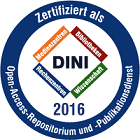Birungi Namuyiga, Dorothy: Understanding the Smallholder Legume-based Mixed Farming System : Application of the Whole-Farm Household Modeling in Uganda. - Bonn, 2025. - Dissertation, Rheinische Friedrich-Wilhelms-Universität Bonn.
Online-Ausgabe in bonndoc: https://nbn-resolving.org/urn:nbn:de:hbz:5-82409
Online-Ausgabe in bonndoc: https://nbn-resolving.org/urn:nbn:de:hbz:5-82409
@phdthesis{handle:20.500.11811/13037,
urn: https://nbn-resolving.org/urn:nbn:de:hbz:5-82409,
author = {{Dorothy Birungi Namuyiga}},
title = {Understanding the Smallholder Legume-based Mixed Farming System : Application of the Whole-Farm Household Modeling in Uganda},
school = {Rheinische Friedrich-Wilhelms-Universität Bonn},
year = 2025,
month = apr,
note = {Smallholder farming remains an important and major source of livelihood for many rural poor globally. Worldwide, over 500 million smallholder farms are accounting for 84% of all farms, which operate around 24% of all agricultural land. However, the majority of smallholders are resourresource-constrainedobtain low productivity on often increasingly degraded lands. Legumes play a crucial role for socio-economic and rural development in the low–input–lowoutput smallholder agriculture systems since the provitheyfood, income and fix nitrogen into soils. Development and research actors often neglect that smallholder and their farming systems are heterogeneous in terms of resource endowments and socio-economic characteristics, and blanket recommendations add no value. Against this backdrop, this study explores comprehenand the relationship between smallholder farms, farmers, and their environment(s) to understand the complexities and boundaries and provide targeted recommendations for farm improvement in northern Uganda. Notably, previous and current government agricultural programs in Uganda (such as the National Agricultural Advisory Services, Operation Wealth Creation, and the Parish Development Model), have mostly taken standard ‘one-sizeone-size-fits-allches to agricultural development, and in turn, no significant poverty reduction and rural development has been registered. The aim is to analyse smallholder pigeon pea (Cajanus cajan [L.] Millspaugh) based mixed farming systems and provide targeted recommendations for pro-poor smallholder development in northern Uganda. We adapt the farming systems analytical approach to provide a detailed description of the farmer, the farm and its environment. Specifically, we assessed the role and determinants of membership in farmer groups on pigeon pea yield and technical efficiency, developed a smallholder typology based on resource endowment, socio-economic and environmental variables, assessed smallholder preferences for pigeon pea across the identified farm types, and simulated farm improvement alternatives using the FarmDESIGN multi-objective model. The study uses mixed methods approaches and is based on empirical field research conducted in rural northern Uganda in 2019 and 2020. We conducted a baseline study to develop a hypothesis about the farming system, followed by a quantitative survey of 257 randomly selected pigeon pea producing smallholder households, a detailed characterization with two model farms for multi-objective optimization followed, and a soil-fertility assessment.
Results show that smallholder farmers who were members of farmer groups had better access to credit, markets, extension, and price information, compared to non-members. However, the success of farmer groups in northern Uganda is largely limited by access-related factors such as the poor road infrastructure, low access to credit, price and market information. The results further show that both members and non-members were technically inefficient in the production of pigeon pea. Using multivariate statistical approaches, six distinct pigeon pea farm types were generated, in which 54% of the smallholders were low-resourced, with below-average land size, livestock units, and low household income. Smallholders preferred pigeon pea because it is highly nutritious and cheaper compared to other locally available protein sources, it fixes nitrogen, it is relatively easy to harvest and provides more biomass compared to other crops. We identified trade-offs and complementarities; for example, improving soil organic matter through the use of crop residues as mulch instead of using them as livestock fodder, given the low soil organic matter balance of most soils. Our results underline the need for strengthened collective public and private action efforts to enhance smallholders’ access to credit, market information and extension services, for increased and improved social learning and better economies of scale. Additionally, smallholders highlight the need for improved pigeon pea varieties that are pest and drought-resistant and easy to intercrop, especially with cereals. Further, pigeon pea breeding efforts should not solely focus on yield improvement but must address the needs expressed by smallholders. Smallholders across farm types can also target improved livestock feeding which could further improve farm-yard manure and subsequent crop productivity. Results from the FarmDESIGN model confirm the need for program targeting for the low and high resourced farm types to address the specific needs of smallholder farmers. Overall, agricultural programs should be more targeted to the different smallholder types given their different contexts, needs and capacities.},
url = {https://hdl.handle.net/20.500.11811/13037}
}
urn: https://nbn-resolving.org/urn:nbn:de:hbz:5-82409,
author = {{Dorothy Birungi Namuyiga}},
title = {Understanding the Smallholder Legume-based Mixed Farming System : Application of the Whole-Farm Household Modeling in Uganda},
school = {Rheinische Friedrich-Wilhelms-Universität Bonn},
year = 2025,
month = apr,
note = {Smallholder farming remains an important and major source of livelihood for many rural poor globally. Worldwide, over 500 million smallholder farms are accounting for 84% of all farms, which operate around 24% of all agricultural land. However, the majority of smallholders are resourresource-constrainedobtain low productivity on often increasingly degraded lands. Legumes play a crucial role for socio-economic and rural development in the low–input–lowoutput smallholder agriculture systems since the provitheyfood, income and fix nitrogen into soils. Development and research actors often neglect that smallholder and their farming systems are heterogeneous in terms of resource endowments and socio-economic characteristics, and blanket recommendations add no value. Against this backdrop, this study explores comprehenand the relationship between smallholder farms, farmers, and their environment(s) to understand the complexities and boundaries and provide targeted recommendations for farm improvement in northern Uganda. Notably, previous and current government agricultural programs in Uganda (such as the National Agricultural Advisory Services, Operation Wealth Creation, and the Parish Development Model), have mostly taken standard ‘one-sizeone-size-fits-allches to agricultural development, and in turn, no significant poverty reduction and rural development has been registered. The aim is to analyse smallholder pigeon pea (Cajanus cajan [L.] Millspaugh) based mixed farming systems and provide targeted recommendations for pro-poor smallholder development in northern Uganda. We adapt the farming systems analytical approach to provide a detailed description of the farmer, the farm and its environment. Specifically, we assessed the role and determinants of membership in farmer groups on pigeon pea yield and technical efficiency, developed a smallholder typology based on resource endowment, socio-economic and environmental variables, assessed smallholder preferences for pigeon pea across the identified farm types, and simulated farm improvement alternatives using the FarmDESIGN multi-objective model. The study uses mixed methods approaches and is based on empirical field research conducted in rural northern Uganda in 2019 and 2020. We conducted a baseline study to develop a hypothesis about the farming system, followed by a quantitative survey of 257 randomly selected pigeon pea producing smallholder households, a detailed characterization with two model farms for multi-objective optimization followed, and a soil-fertility assessment.
Results show that smallholder farmers who were members of farmer groups had better access to credit, markets, extension, and price information, compared to non-members. However, the success of farmer groups in northern Uganda is largely limited by access-related factors such as the poor road infrastructure, low access to credit, price and market information. The results further show that both members and non-members were technically inefficient in the production of pigeon pea. Using multivariate statistical approaches, six distinct pigeon pea farm types were generated, in which 54% of the smallholders were low-resourced, with below-average land size, livestock units, and low household income. Smallholders preferred pigeon pea because it is highly nutritious and cheaper compared to other locally available protein sources, it fixes nitrogen, it is relatively easy to harvest and provides more biomass compared to other crops. We identified trade-offs and complementarities; for example, improving soil organic matter through the use of crop residues as mulch instead of using them as livestock fodder, given the low soil organic matter balance of most soils. Our results underline the need for strengthened collective public and private action efforts to enhance smallholders’ access to credit, market information and extension services, for increased and improved social learning and better economies of scale. Additionally, smallholders highlight the need for improved pigeon pea varieties that are pest and drought-resistant and easy to intercrop, especially with cereals. Further, pigeon pea breeding efforts should not solely focus on yield improvement but must address the needs expressed by smallholders. Smallholders across farm types can also target improved livestock feeding which could further improve farm-yard manure and subsequent crop productivity. Results from the FarmDESIGN model confirm the need for program targeting for the low and high resourced farm types to address the specific needs of smallholder farmers. Overall, agricultural programs should be more targeted to the different smallholder types given their different contexts, needs and capacities.},
url = {https://hdl.handle.net/20.500.11811/13037}
}






